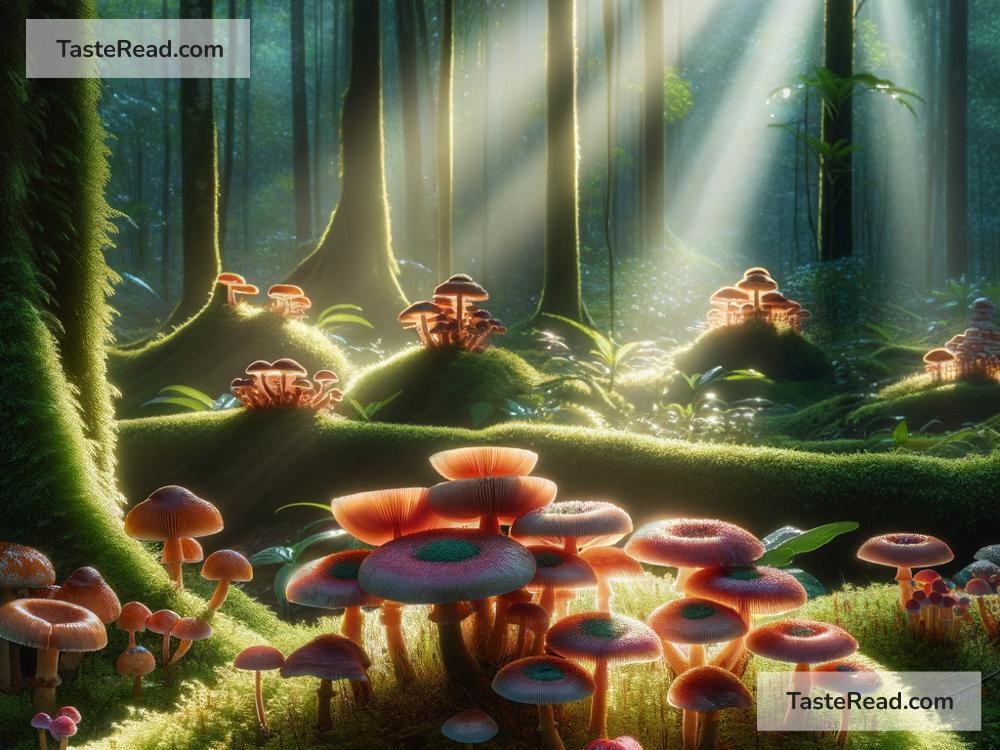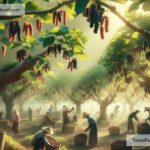The Fascinating Story of Mushrooms in Ancient Folklore
Mushrooms are mysterious, magical, and full of wonder. They pop up suddenly in forests, look otherworldly, and have been an important part of human culture for thousands of years. In ancient folklore, mushrooms were often linked to stories of magic, fairies, and the supernatural. These fungi inspired awe and curiosity, influencing myths and legends across different cultures around the world.
Mushrooms in Nature: Signs of Magic?
Mushrooms appear almost out of nowhere and grow quickly after rain. Their sudden appearance led ancient people to believe that they were connected to otherworldly forces. Some mushrooms, like colorful fly agaric mushrooms (the classic red cap with white spots), looked so strange that they were associated with magic and mystery. These unique traits made people wonder if mushrooms were a gift from the gods or a doorway to another realm.
Unlike plants or animals, the way mushrooms grow and reproduce isn’t obvious at first glance. This added to the mystique surrounding them. People believed mushrooms were supernatural, appearing overnight in secret places. To them, it seemed like mushrooms had a life of their own, detached from the rules of the natural world.
Mushrooms and Fairy Rings
One of the most famous mushroom-related myths involves “fairy rings.” Fairy rings are circular arrangements of mushrooms that form naturally in forests and grasslands. To ancient people, these rings were far from ordinary—they were thought to be created by magical creatures, such as fairies or elves.
In European folklore, fairy rings were believed to be places where fairies danced at night. People were warned not to step into these circles, as doing so could result in being trapped in the fairy realm. Some stories said that if you entered a fairy ring, you might lose track of time, spending hours or even years there without realizing it. This idea added an air of danger and enchantment to these natural formations.
Fairy rings were not only seen as mystical but also as a symbol of nature’s hidden power. They reminded people that there were forces in the world that could not be fully explained.
Mushrooms as Tools for Spiritual Journeys
In many ancient cultures, certain types of mushrooms were used in spiritual rituals or ceremonies. For example, some mushrooms contain psychoactive compounds that can alter the mind and perception. Indigenous peoples in Central and South America used mushrooms, like the psilocybin-containing “magic mushrooms,” for religious purposes. These fungi were believed to help individuals connect with gods, spirits, or the universe.
Aztecs referred to these special mushrooms as “teonanácatl,” meaning “flesh of the gods.” They used them to communicate with deities and gain insights into their lives. Shamans and spiritual leaders would consume these mushrooms during rituals to enter altered states of consciousness. They believed this allowed them to access sacred knowledge and wisdom.
Similarly, Siberian shamans used fly agaric mushrooms in their ceremonies. These mushrooms were thought to bring visions and aid in healing. The mushroom’s bright red color gave it a special status as a tool for connecting with the divine.
Mushrooms in Mythological Stories
In many myths and legends, mushrooms are connected to magical beings like gods, spirits, witches, and fairies. In Slavic folklore, mushrooms were thought to appear wherever the thunder god Perun hurled his lightning bolts. This belief made mushrooms symbols of power and transformation.
In Norse mythology, mushrooms may have played a role in the tales of berserkers—fierce Viking warriors who entered a state of uncontrollable rage during battle. Some historians theorize that these warriors consumed psychoactive mushrooms to enhance their strength and ferocity, though this remains debated.
In other parts of the world, mushrooms were symbols of fertility and abundance. Ancient Chinese texts described fungi as “hidden treasures” that grew in secret places. Mushrooms like lingzhi (also known as reishi) were said to have magical healing powers and were linked to immortality.
Superstitions and Warnings
While mushrooms were often seen as magical, they also inspired fear. Many mushrooms are poisonous, and people who ate the wrong ones suffered serious illness or even death. This danger gave rise to cautionary tales about mushrooms.
Some European folklore warned against touching or consuming mushrooms from fairy rings, as they might be cursed. Witches were also said to use toxic mushrooms in their potions, adding to the image of mushrooms as both powerful and dangerous.
A Continuing Legacy
The mysterious reputation of mushrooms has persisted into modern times. While science has uncovered the biological secrets of fungi, their cultural significance hasn’t faded. Mushrooms still symbolize magic, mystery, and the unknown. They feature in fantasy stories, fairy tales, and even modern art and pop culture.
From fairy rings to rituals and myths, mushrooms have fascinated humankind for centuries. They blur the line between reality and imagination, reminding us of the wonder hidden in the natural world. Next time you see mushrooms growing in the wild, take a moment to appreciate their ancient story. Who knows? Maybe there’s still a little magic left in them.


